As a student leader, peace activist and a staunch supporter of democracy, journalist Ved Bhasin (May 1, 1929 – November 5, 2015) faced his first test at the age of 17 when Jammu, his home town, witnessed the worst in November 1947. In his own way, he contributed his bit in preventing what was planned. For most of his illustrious journalistic career, Ved Ji skipped talking about it fearing it may hurt the people whose perceptions were based on national interest or the propaganda. Then, one day in September 2003 he felt compelled to tell his story of those dark days in the Jammu University at an event organized by SAFHR-Other Media. On the 68th anniversary of Jammu Massacres, Kashmir Life publishes text of the speech that goes in history as an authoritative reportage of a pogram apparently obliterated from the history for most of the last decades
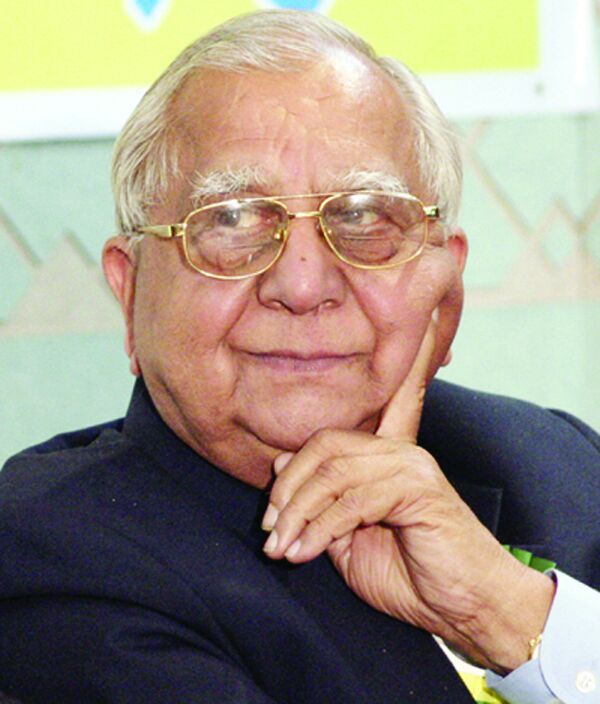
In his The Responsibility of the Intellectuals, Noam Chomsky refers to Dwight Macdonald’s series of articles in Politics published in 1945 on the responsibilities of Peoples and, specifically the responsibility of intellectuals in which he asks the question: to what extent were the Germans or Japanese people responsible for the atrocities committed by their governments? And, quite properly, he turns the question back to us; to what extent are the British or American people responsible for the vicious terror bombings of civilians, perfected as a technique of warfare by the Western democracies and reaching their culmination in Hiroshima and Nagasaki, surely among the most unspeakable crimes in history?
Chomksy writes: “With respect to the responsibility of intellectuals, there are still other, equally disturbing questions. Intellectuals are in a position to expose the lies of governments, to analyse actions according to their causes and motives and often hidden intentions. … For a privileged minority, Western democracy provides the leisure, the facilities, and the training to seek the truth lying hidden behind the veil of distortion and misrepresentation, ideology, and class interest through which the events of current history are presented to us….. It is the responsibility of the intellectuals (which is much deeper than the responsibility of the people, given the unique privilege that they enjoy) to speak the truth and to expose lies”.
Such truth and exposure of lies may hurt many a well-meaning people who may find their perceptions based on propaganda or in the name of so called national interest getting altered. But dignity lies in seeing reality as it is and acting responsibly in the face of it.
I was initially hesitant to speak on this delicate subject and recall the dark and tormented days of partition lest these hurt some well meaning friends who may have formed their own notions and perceptions about those sad events. But Chomsky’s remarks inspired me to narrate my own experience of Jammu in the wake of partition of the sub-continent. I am happy that Jammu learnt appropriate lessons from the gory dance of death and destruction that the region suffered by setting the glorious example of communal harmony, tolerance and grave provocations amid orgy of violence all around us.
I must admit at the very outset that in the absence of any factual and objective written record of those black days of violence, bloodshed and communal carnage it is difficult to speak exhaustively, with authenticity and chronologically about those days. Whatever has been written on this subject, either here or across the line of control, is both exaggerated and one sided aimed at maligning one or the other, or as a matter of justification for those inhuman acts.
Whatever I speak here this evening is mostly based on my memory. What I am going to narrate is my own experiences of Jammu of 1947 as a young 17 year old student and peace activist. I have also relied on the information from a few enlightened friends who do not see those events with coloured communal glasses.
Politics In 1947
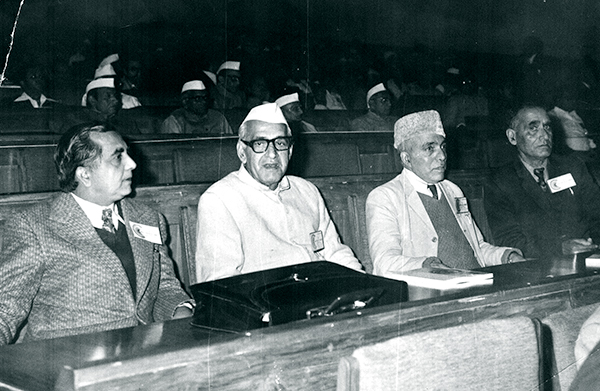
(Photo Courtesy: Family Photo Album)
Let me come to the point by briefly narrating the political situation when the subcontinent was on the threshold of independence with colonial British rulers deciding to hand over power to the leaders of the Congress and Muslim League in divided India and Pakistan respectively.
On the eve of departure of the British colonial power from India, the Cabinet Mission issued a statement in 1946 which under paragraph 14 declared that “paramountcy can neither be retained by the British Crown nor transferred to the new government”. Subsequently, the question of paramountcy was finally disposed of by the Independence Act of 1947 which through Article 7 stipulated that “the suzerainty of His Majesty over the Indian states lapses”. This means that after the departure of colonial power, the princely states became completely independent and sovereign, free to decide their own future and legally under no obligation to join the newly created Dominions of India or Pakistan.
The Mountbatten Plan was announced on June 3, 1947 with the return of the Viceroy from London and Pakistan and India emerged as separate states of the divided country on August 14 and 15, respectively. The entire sub-continent was gripped by communal frenzy with large-scale killings, rapes etc in various parts like Bengal, Bihar, Punjab and Delhi. The history witnessed the world’s biggest mass migration of people with Hindus migrating from the territories coming under Pakistan and Muslims moving to their land of dreams amid terror and bloodshed.
The climate in Jammu was tense, gripped by fear, panic and uncertainty about the future. In the absence of any authentic information rumours spread like wildfire with the fanatic leaders and parties of both the communities trying to incite communal passions. The local media in Jammu was divided into what was called as Hindu Press and Muslim Press, presenting the news and views from communal angle. The truth and fact was the main casualty in such a situation. Some of the newspapers like Tribune and Civil Military Gazette and Urdu newspapers like Milap, Pratap and Zamindar, from Lahore were the main sources of information.
The Urdu newspapers, in particular, presented only one-sided and exaggerated accounts of the happenings in the neighbouring state and rest of the country. Their writings were mostly inflammatory. But with the breakdown of rail and road links with Pakistan even these newspapers were not available to the people.
Jammu’s politics too was completely polarised on communal lines with the organisations like Muslim Conference, Hindu Mahasabha or Rajya Hindu Mahasabha dominating it. The feudal elements in the region belonging to the two communities had fully rallied under the Maharaja’s banner vowing their loyalty to him. The secular parties like the National Conference and Congress had insignificant presence in Jammu, except in Mirpur where NC had a strong presence under the leadership of Raja Mohammed Akbar.
Even the student community was mostly divided on communal lines with the organisations like Hindu Students Federation, sponsored by RSS and Hindu Sabha, and Muslim Students Federation, patronised by the Muslim Conference, were trying to play their communal card and inciting the student community. The Jammu Students Union with which some of us were associated was the only youth organization which kept the banner of secularism afloat. Though it maintained close links with the National Conference, it functioned independently and tried against all odds to preserve peace in the region. I was the general secretary of the Union in 1946-47 and among those actively associated with it were Abdul Khaliq Ansari, Balraj Puri, Nilamber Dev Sharma, Ved Pal Deep, Ram Nath Mengi, Bhupinder Singh. Inderjit Jolly, Gurcharan Singh Bhatia and many others, all of whom were among its founder members.
The Mountbatten Plan
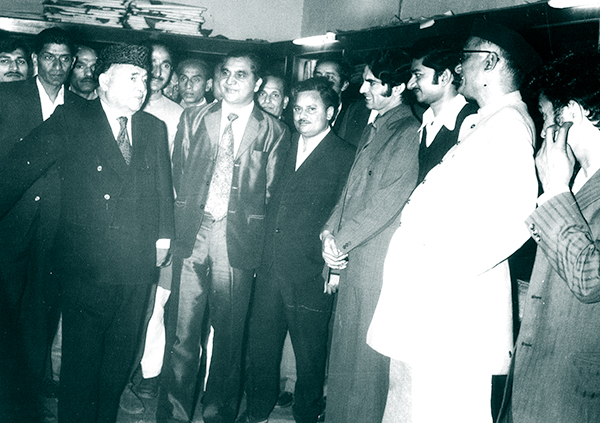
The announcement of the Mountbatten plan hastened as metamorphosis in the affairs of the State. While the subcontinent was preparing for independence, Jammu and Kashmir was plunged into a serious crisis, heading for a major catastrophe. Maharaja Hari Singh was indecisive with the reports that he was nursing the idea of declaring J&K as independent state. There were rumours that his religious guru Swami Sant Dev, on whose advice Maharja relied, had predicted that he was destined to be the sovereign of a large Hindu state. Ram Chandra Kak, prime minister of J&K, was opposed to Kashmir joining the Indian Union and was in favour of an independent J&K.
Kak’s hostility to the National Conference was well known and both he and the Maharaja were in no mood to hand over power to the people by setting up a popular government. Sheikh Abdullah, who was then in prison and his National Conference too were not opposed to the idea of an independent Kashmir. However, it was the hostility between Sheikh and the Maharaja that kept them apart in fulfilling their common dream of a sovereign independent state.
After June 3 Plan, the Maharaja was under pressure from both Congress and Muslim League leaders to join the Constituent Assembly of India or Pakistan. The vacillating ruler decided not to join either of the two assemblies thus making his preference for independence obvious. There were reports that Kak had met the Maharaja and advised him not to join the Constituent Assembly and annoy his majority Muslim subjects.
Gandhi’s Visit

In this backdrop Gandhi Ji visited Srinagar on August 1, and met the Maharaja. Though Gandhi declared that his mission was apolitical and he was only fulfilling an old promise to the Maharaja to visit Kashmir, there were clear indications that he had advised him to join Indian Union. Gandhi ji returned to New Delhi via Jammu where he arrived on June 3. The local National Conference had organised a quiet reception for him and he was put up in a private house.
Since the NC decided not to involve the local police in providing him security, I was entrusted with the task of mobilising a group of young boys and girls to provide a security cover to Gandhiji. We were able to organise a group of about fifty boys and girls for this purpose who were put on duty, both at the house where Gandhi stayed and at the prayer meeting he addressed in the compound of a house in the nearby Chowk in the evening before his departure for Sialkot. Though there was no formal announcement about the prayer meeting in view of ban on holding public meetings and announcement by loudspeakers, a few thousand people had joined the prayer meeting to listen to Gandhiji.
Fearing an attack by the RSS workers, who were then engaged in hate-campaign against Gandhi, we had fully encircled the venue of the meeting. Gandhi mostly spoke on his mission to preserve communal peace and amity.
Events moved quickly after Gandhi’s visit creating an impression that the reluctant ruler had made up his mind on the question of joining the Indian Union. Ram Chand Kak was removed as the Prime Minister and later a case was instituted against him. Maj General Janak Singh, a Maharaja loyalist, was appointed as the new Prime Minister. With his appointment the uncertainty about the future dispensation of the State was removed and it became clear that the Maharaja and his government, National Conference and Congress have lined up to shape the future.
The NC was jubilant at the removal of Kak hailing it as its victory. Hundreds of NC workers collected in the secretariat compound in Srinagar on August 11, and gave an ovation to Janak Singh with the slogans of Maharaja Bahdur Ki Jai, Janak Singh Zindabad and Sheikh Abdullah Zindabad.
Sheikh Freed

Sheikh Abdullah was released from jail on September 29, with nearly two lakh Kashmiris joining to give him a right, royal reception. He exhorted them to preserve peace and communal harmony and pledged his loyalty to the ruler. Before meeting the Maharaja he wrote a letter to him pledging his loyalty to him. The letter reads:
“May it please Your Highness,
It is now realised by every well wisher of the State that many of the regrettable happenings of the past have mainly been due to the misunderstandings which appear now to have deliberately been created by interested people in order to achieve their own ends… In spite of what has happened in the past I assure Your Highness that myself and my party have never harboured any sentiment of disloyalty towards your Highness’ person, throne or dynasty. The development of this beautiful country and the betterment of the people is our common aim and interest and I assure Your Highness the fullest and loyal support of myself and my organisation. Not only this, but I assur Your Highness that any party, within or without the State which may attempt to create any impediments in our efforts to gain our goal, will be treated as our enemy …Before I close this letter I beg to assure Your Highness once again of my steadfast loyalty and pray that God under Your Highness’ aegis bring such an era of peace, prosperity and good government that it may be second to none and be an ideal for others to copy.
Your Highness’s Most Obedient Subject
S.M. Abdullah.”
The New Prime Minister
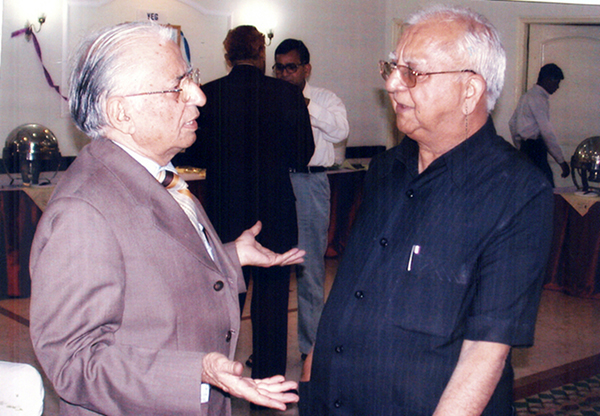
Mehr Chand Mahajan arrived in Srinagar and met the Maharaja amid speculations that he is to replace Janak Singh as the new Prime Minister. Soon after taking over as PM, Mahajan declared on October 16, that he would endeavour to make Kashmir as the Switzerland of the East. He ordered major changes in the administration at the highest level. Ram Nath Sharma, a Sessions Judge, replaced Choudhary Niaz Ahmed as the new Chief Secretary. Mahajan’s visit to New Delhi, where he met Nehru, was followed by Maharaja leaving Srinagar for Jammu on October 26, visit of V P Menon and signing of the Instrument of Accession.
Sheikh Abdullah was appointed as the Head of the Administration followed by a historic rally at Lal Chowk where Sheikh pledged his loyalty to India and Nehru reiterating his promise that a plebiscite would be held to ascertain the wishes of the people to ratify the accession which was temporary and confined only to three subjects. By then the raiders from Pakistan had entered Jammu and Kashmir, engaged in looting, plunder, killing and raping women of both the communities and were almost knocking the doors of Srinagar.
While the Valley preserved perfect communal peace with the NC playing a glorious role in this regard the situation in Jammu was quite tense and inflammable.
A Divided Jammu
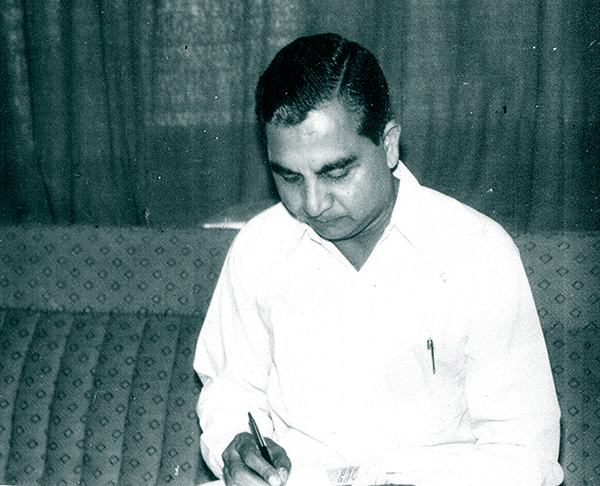
As I mentioned earlier the politics of Jammu was divided on communal lines. But for the Roti agitation of 1943 when Hindus and Muslims joined hands to protest against near famine condition under one banner and about a dozen persons were killed in police firing, majority of them Muslims, the communal clashes in the city were the common feature of its life.
After the announcement of the cabinet Mission Plan there was total confusion among various political parties. The Hindu Sabha was divided into two factions with the pro-Maharaja elements functioning under the banner of Rajya Hindu Sabha headed by Pandit Prem Nath Dogra. It wanted the decision on the future dispensation of the State by the Maharaja, expressing its full loyalty to him though most of its members were feudal elements and upper caste Hindus clearly favouring the State emerging as an independent sovereign state. The other section of
Hindu Sabha led by Gopal Dutt Mengi adopted a resolution asking the Maharaja to join the Indian Union.
The Muslim Division
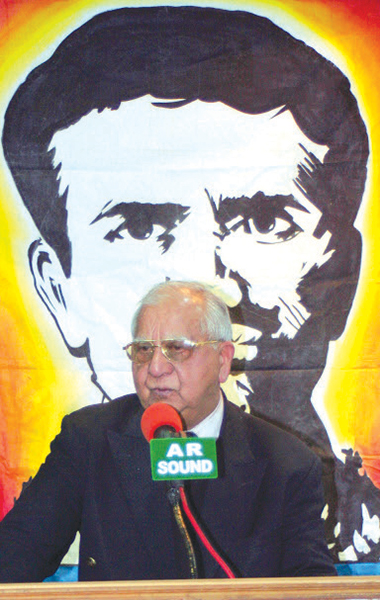
Even the Muslim Conference, closely linked with the Muslim League, was in a state of confusion. In a press conference on May 28, 1947, Choudhry Hameedullah, acting President of the Muslim Conference said:
“Accession to Pakistan will disturb Hindus while accession to India will disturb Muslims. Therefore, we have decided not to enter into any controversy either with India or Pakistan. The second thing we have decided is that we should try to acquire independence for the State. The third question now before us is what would be the position of the Maharaja? We have never been lacking in showing loyalty and respect for him and it is because of this attachment that we did not support the Quit Kashmir Movement although in one way it was a natural movement. We, therefore, felt that we should try to find a solution, which will maintain the position of the Maharaja Bahdur while at the same time, it should also satisfy the Praja. The best solution that we have found is that the Maharaja should become a constitutional King, as is the position in many countries… The fourth thing that we have decided is that we should have a Constituent Assembly of our own to draft our constitution… I have the support of all-important leaders of the Muslim Conference and Chaudri Ghulam Abbas Khan has himself expressed agreement with this proposal. A representative convention of the Muslim Conference will be called within a month where the proposal will be unanimously adopted. So, therefore, this solution should be considered the official policy of the Muslim Conference. Muslim League has not given (us) this (idea), nor are we presenting it to deceive the Hindus.
We have arrived at this solution in all honesty and after taking into account the local situation. The only connection that the Muslim League has with it is that the Muslim League’s past and present policy of non-intervention in Indian States has strengthened us. I would like to say in all honesty that we have had no talks in this connection with any leader or worker of the Muslim League. We do not want to get any instructions from the Muslim League and Hindus should also give up being led by the Congress. The best thing for us all is that the League and Congress should leave us undisturbed and we should give up both the parties. When we say we want to separate ourselves from Hindustan and Pakistan, we mean that we want to be friends with both of them. We would have political as well as economic relations with Pakistan and in the presence of Hindu ruling dynasty; we will also have pleasant relations with India.”
The meeting of the Working Committee of the Muslim Conference was called on July 18, 1947. The Working Committee after careful consideration unanimously endorsed the statement made by, the acting President, Choudhry Hameedullah; and “unanimously adopted a resolution calling upon the Maharaja to declare independence and assured him of the Party’s wholehearted support and cooperation”.
However, it soon turned somersault, presumably under directions from their Muslim League mentors and in a convention it expressed its “jubilation and great satisfaction” at the coming into existence of Pakistan and congratulated Quaid-e-Azam.
While justifying Kashmir’s accession to Pakistan, the resolution adopted at the convention said: “It is, therefore, necessary that the State must accede to Pakistan.”
“The Convention strongly demands from the Maharaja that the people of Kashmir should be given complete internal autonomy and the Maharaja should treat himself as constitutional Head of the State and set up a representative Legislative Assembly while handing over the portfolios of Defence, Foreign Affairs and Communication to the Constituent Assembly of Pakistan.”
“The convention wishes to proclaim that if the Kashmir Government did not accept the demands of the Muslim Conference or did not act upon the advice so tendered, on account of any internal or external pressure and instead brings about accession of the State to the Constituent
Assembly of India, the people of Kashmir will stand as one man against such a decision and launch a struggle with all the power at their command.”
The National Conference in Jammu too was divided on this question. The non-communist members of the NC at a meeting adopted a resolution asking the Maharaja to release Sheikh Abdullah, form popular government and join the Indian Union. On the other hand the dominant pro-communist group headed by Moti Ram Baigra in its meeting stressed the release of the Sheikh and transfer of power to the people before taking any decision about the accession. Most of the members of the group, however, favoured J&K becoming an independent state.
August 15, 1947

The atmosphere was subdued in Jammu on India’s Independence Day and there were no rejoicings like in the rest of the country. The local Congress and pro-accession NC activists organised small indoor meetings where the dawn of independence was welcomed by unfurling the tricolour.
Several banners were put up across the city roads, along with the Maharaja’s flag, proclaiming “Maharaj Adhiraj as the ruler of sovereign independent Jammu, Kashmir, Ladakh, Tibet” by the Hindu Rajya Sabha and the RSS clearly indicating their preference. (Later, after the formation of the popular government when the Students Union hoisted Indian National and Red NC flag with plough on the top of the then Prince of Wales College, these were removed and torn by the supporters of RSS next morning, followed by an attack on the Union activists.)
Communal tension was building up in Jammu soon after the announcement of the Mountbatton plan with both Hindu Sabha-RSS and the Muslim Conference trying to incite communal passions. Tension increased with a large number of Hindus and Sikhs migrating to the State from Punjab and NWFP and even from areas now under Pakistan’s control.
The Poonch Scene
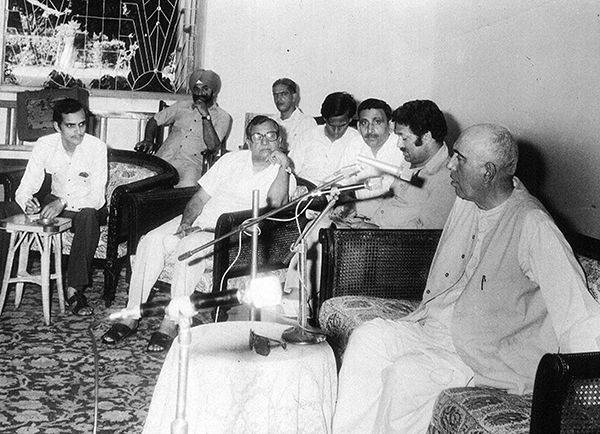
Trouble was brewing in Poonch where a popular non-communal agitation was launched after the Maharaja’s administration took over the erstwhile Jagir under its direct control and imposed some taxes. The mishandling of this agitation and use of brutal forces by the Maharaja’s administration inflamed the passions turning this non-communal struggle into a communal strife.
The Maharaja’s administration had not only asked all Muslims to surrender their arms but also de-mobilised a large number of Muslim soldiers in the Dogra army and the Muslim police officers, whose loyalty it suspected. The Maharaja’s visit to Bhimber was followed by large scale killings. In areas like Pulandri, Bagh and Sudhnoti, a large number of ex-servicemen and soldiers who had joined the British Indian Army and served in the Second World War, has raised a banner of revolt against the Maharaja.
In absence of any authentic and objective written account of those days it is difficult to say what actually happened. The troops of the Dogra army were posted all over in Poonch, Bagh, Rawlakot and other areas. Clashes between the Hindu soldiers and Muslim ex-servicemen followed.
While the Muslim population from Poonch areas mostly fled to the other side, the Hindu and Sikhs from Bagh, Pulandri, Rawalkot and other areas started migrating to Poonch. Referring to these events Sheikh Abdullah, according to a New Delhi report circulated by the Associated Press of India, on October 21 said:
“That the present troubles in Poonch, a feudatory of Kashmir, were because of the policy adopted by the State. The people of Poonch who suffered under the local ruler, and his overlord, the Kashmir durbar, had started a people’s movement to redress their grievances. It was not communal. The Kashmir State sent their troops and there was panic in Poonch. Most of the adult population in Poonch was ex-servicemen of the Indian Army, who had close connections with the people in Jhelum and Rawalpindi. They evacuated their women and children, crossed the frontier and returned with arms supplied to them by willing people. The Kashmir State forces were thus forced to withdraw from certain areas.”
The reports came that the rebellion also spread to the adjoining Mirpur district where also ex-servicemen lived in large number. There were allegations that while quelling the disturbances atrocities were committed on the innocent people and several villages were set ablaze. The state administration refuted these allegations and claimed that the rebellion has been crushed, blaming the rebels for attacks on Hindus and Sikhs.
The Holocaust
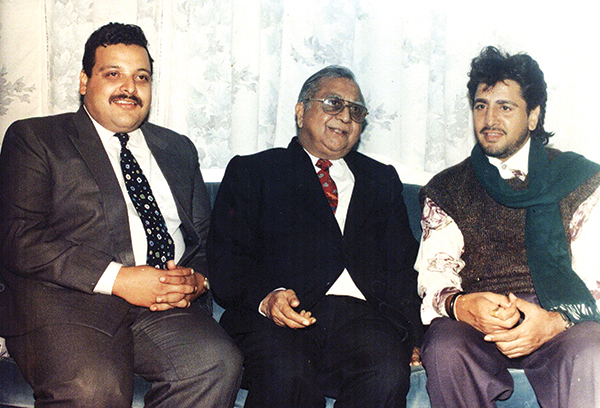
Jammu witnessed worst communal holocaust. All kinds of rumours were spread about the Muslims arming themselves and planning to attack Hindus to justify the communal carnage that took place later.
The population of Jammu province, according to 1941 census, was nearly 20 lakhs with a Muslim population of over 12 lakhs. Jammu district had a population of about four and half lakh with the Muslims accounting for 1.70 lakh. The population of the capital city of Jammu was just fifty thousand, Muslims constituting nearly 16 thousands. By September end, a large number of Muslims from the border areas of Bishnah, RS Pura, Akhnoor etc had fled to Sialkot (Pakistan). With communal riots in the neighbouring Punjab there was total panic in the border areas. While a number of Muslims from RS Pura and Kathua escaped to Sialkot, Hindus and Sikhs also started moving towards Jammu city.
Meanwhile a large number of Hindus and Sikhs from Sialkot and other neighbouring areas had moved to Jammu where the authorities were unable to provide them any shelter or relief. Some relief measures were organised at the non-governmental level but these were insignificant. Some of the refugees either found shelter in the houses of their relatives while a large number were living in open in the Parade Ground and other areas. The last train from Sialkot brought a larger number of Hindu and Sikh refugees.
There were reports of large-scale killing of Muslims in Udhampur district, particularly in proper Udhampur, Chenani, Ramnagar and Reasi areas. Even in Bhaderwah a number of Muslims were the victims of communal marauders. The RSS played a key role in these killings and was joined by a number of armed Sikh refugees who even paraded the Jammu streets with their naked swords.
These riots were planned and executed by the RSS and ironically some of those who led these riots in Udhampur and Bhaderwah later joined the National Conference with some of them even serving as ministers. Killing of a large number of Muslims was reported from Chhamb, Deva Batala, Manawsar and other parts of Akhnoor with several of them fleeing to the other side or moving to Jammu.
In Kathua district, too, there was large scale killing of Muslims with women raped and abducted. In Bilawar area the Muslims were killed in large number and womenfolk raped or abducted by Hindu communalists. A large number of them fled to Doda side from Machedi and other areas. Rumours spread that those who had fled for life had created a “little Pakistan” in Doda forests.
Later when Sheikh Abdullah arrived in Jammu after assuming the reigns of office as Head of the Emergency Administration a goodwill delegation led by Girdhari Lal Dogra, then District Emergency Officer of Kathua and comprising Gopal Dutt Mengi of Hindu Sabha. Syed Nazir Hussain Samnani, then General Secretary of the Provincial National Conference and Attah Mohamed, a forest officer was sent to Billawar to rescue and bring back these stranded Muslims facing near starvation. I joined this team along with some of my Students Union colleagues in this rescue operation. A group of armed Peace Brigade men from Kashmir also accompanied us. On their return to Machedi these Muslims narrated their tales of woe and sorrow. We also managed to recover a number of Muslim women abducted by communal Hindus and brought them back to Jammu for rehabilitation.
Instead of trying to prevent such killings and preserving communal peace, the Maharaja’s administration helped and even armed the communal marauders. Clearly it was a planned genocide by the RSS activists who were joined by Sikh refugees from West Pakistan and enjoyed full protection and patronage of the administration. In Jammu a Hindu-Sikh Defence committee was set up under the chairmanship of Lala Dina Nath Mahajan, a leading advocate, with official patronage.
Mahajan later became a finance and revenue minister in Bakshi Ghulam Mohammed’s ministry.
The worse happened in the city where the Muslim localities of Talab Khatikan and Mohalla Ustad were virtually besieged and the Muslims were even denied water supply and food-grains. In the lower parts of the city Lakhdata Bazar and Peer Mitha Bazar were the dividing lines between Hindus and Muslims. Most of the Muslims outside the Muslim dominated areas were brutally killed by the communal marauders who moved freely in vehicles with arms and ammunition even when the city was officially put under curfew. The curfew, it appeared, was meant only to check the movement of Muslims. Some of us managed to carry some food-grains for besieged Muslim friends and others in Mohalla Ustad. Though Colonel Pir Mohammed and some other royalists had put up white peace flags on their houses the communalists made many efforts to attack them.
Hindus had taken up positions on their houses situated at the border line of Lakhadata Bazar and Peer Mitha. They were later joined by the troops from Patiala. The Muslims in Talab Khatikan area too had joined to defend themselves with whatever arms they could gather. Some reinforcement was provided to them by the Muslim Conference later.
There was mass killing of Muslims in and around Jammu. A large number of Gujjar men and women who used to supply milk to the city from the surrounding villages were massacred en-route. The Ramnagar rakh was littered with the dead bodies of Gujjar men, women and children. A colleague of mine, while on his morning walk in Ramnagar area, heard the shrieks of a child and found an 8-9 year old girl crying along with the slain bodies of her parents in Ramangar rakh. He brought her with him and was later kept in the rehabilitation camp after Sheikh
Abdullah arrived in Jammu on November 16, 1947 and a refugee camp was setup in Mohalla Ustad.
Driven To Death

The worst carnage took place later when the Muslims in Talab Khatikan area were asked to surrender. They were shifted to the police lines at Jogi Gate, where now Delhi Public School is situated. Instead of providing them security, the administration encouraged them to go to Pakistan for their safety. The first batch of several thousand Muslims were loaded in about sixty lorries to take them to Sialkot. Unaware of what is going to happen to them these families boarded the buses. The vehicles were escorted by the troops. But when they reached near Chattha on Jammu-Sialkot road, in the outskirt of the city, a large number of armed RSS men and Sikh refugees were positioned there. They were pulled out of the vehicles and killed mercilessly with the soldiers either joining them or looking as idle spectators. The news about the massacre was kept a closely guarded secret.
Next day another batch of these Muslim families were similarly boarded in the vehicles and met the same fate. Some of those who somehow managed to escape the wrath of killers reached Sialkot to narrate their tales of woes and sorrow.
In the absence of any record it is difficult to say how many were killed, raped or abducted. But there is no doubt that their number runs into several thousands.
State Sponsored Plan
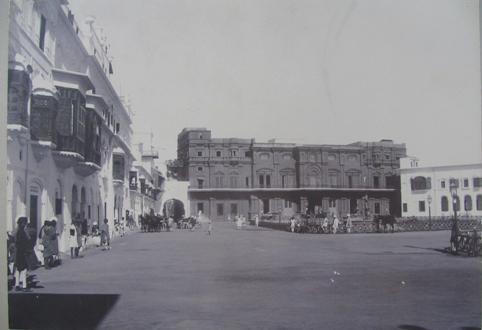
Though the State administration denied its hand in the orgy of violence, I will just mention two incidents to show that the administration was involved with it to change Jammu’s demographic character. I as General Secretary of the Students Union had issued an appeal entitled
Insaniyat Ke Naam Par asking people to maintain communal peace and harmony in the best interests of the State and join in the efforts for providing relief to the Hindu, Sikh and Muslim sufferers of the communal orgy. We had also formed a students’ peace committee. I was summoned by the then governor of Jammu, Lala Chet Ram Chopra at his official residence at Kachi Chowni. Though polite, he warned me of dire consequences for the Students Union making peace efforts. I recall, he first warned me by saying that “I could have put you behind bars for your nefarious activities. But since you also happen to be a khatri like me and are also related to me, I am simply giving you advice. It is not the time to form peace committees and work for peace but to defend Hindus and Sikhs from the Muslim communalists who are planning to kill them and de-stabilise the situation. We have already formed a Hindu Sikh Defence Committee. You and your colleagues better support it.”
Then he added “We are imparting armed training to Hindu and Sikh boys in Rehari area. You and your colleagues should better join such training”.
When I sent a colleague to the training camp next day he found that some RSS youths and others were being given training in the use of 3.3 rifles by the soldiers.
Another incident that I recall is about Mr Mehr Chand Mahajan who told a delegation of Hindus who met him in the palace when he arrived in Jammu that now when the power is being transferred to the people they should better demand parity. When one of them associated with National Conference asked how can they demand parity when there is so much difference in population ratio. Pointing to the Ramnagar rakh below, where some bodies of Muslims were still lying he said “the population ratio too can change”.
The Other Killings

The communal violence that gripped Jammu was not altogether one-sided. A large number of Hindu and Sikhs too were butchered in some parts of the region, particularly in Rajouri, Mirpur and areas now under Pakistan. In Rajouri while Hindus from the neighbouring
Muslim dominated villages shifted to the town, the Muslims from the town migrated to the nearby villages or even crossed over to the other side. The Muslim gangs surrounded the town later and resorted to mass killings, loot and rapes. Similarly a large number of Hindus were killed in Mirpur district. While the Muslims from the district town of Mirpur migrated to the nearby villages and even to Jhelum, the Hindus from the villages started trekking to the town for safety.
The communal violence actually started with some RSS men killing two Muslim police officers Raja Iqbal Khan and Sheikh Imam Din. Even some NC supporters were attacked. The Hindus were mostly massacred by the Muslim communalists joined even by some former members of the INA while on their way to Jammu at Qasgumma. A large number of the migrating Hindus in the caravan, moving on foot without food and water, were killed and women raped and abducted by the marauders. Many others managed to escape and reach Chowki Choura from where they were brought to Jammu. Similar mass killings of Hindus and Sikhs took place at Alibeg.
To recall those days of communal orgy my only objective is to point out that a communalist and killer has no religion. It was the humanity that was the victim of communal fanatics. Instead of blaming any one for those dark days of partition, we should better learn appropriate lessons from history and not allow the communal fanatics of one or the other community to vitiate the atmosphere and disturb communal peace and harmony.
While expressing my sense of shame for the orgy of 1947 violence I can raise my head with pride that the enlightened and politically mature people of Jammu have preserved perfect communal peace and harmony after those dark days of communal violence, setting a glorious example for many other areas witnessing such communal violence in the sub-continent.















